Data Structure Typed






Data Structures of Javascript & TypeScript.
Do you envy C++ with STL, Python with collections, and Java with java.util ? Well, no need to envy anymore! JavaScript and TypeScript now have data-structure-typed.
Now you can use this library in Node.js and browser environments in CommonJS(require export.modules = ), ESModule(import export), Typescript(import export), UMD(var Queue = dataStructureTyped.Queue)
Installation and Usage
npm
npm i data-structure-typed
yarn
yarn add data-structure-typed
import {
BinaryTree, Graph, Queue, Stack, PriorityQueue, BST, Trie, DoublyLinkedList,
AVLTree, MinHeap, SinglyLinkedList, DirectedGraph, TreeMultimap,
DirectedVertex, AVLTreeNode
} from 'data-structure-typed';
CDN
Copy the line below into the head tag in an HTML document.
development
<script src='https://cdn.jsdelivr.net/npm/data-structure-typed/dist/umd/data-structure-typed.js'></script>
production
<script src='https://cdn.jsdelivr.net/npm/data-structure-typed/dist/umd/data-structure-typed.min.js'></script>
Copy the code below into the script tag of your HTML, and you're good to go with your development work.
const {Heap} = dataStructureTyped;
const {
BinaryTree, Graph, Queue, Stack, PriorityQueue, BST, Trie, DoublyLinkedList,
AVLTree, MinHeap, SinglyLinkedList, DirectedGraph, TreeMultimap,
DirectedVertex, AVLTreeNode
} = dataStructureTyped;
Vivid Examples
Binary Tree
Try it out, or you can execute your own code using our visual tool
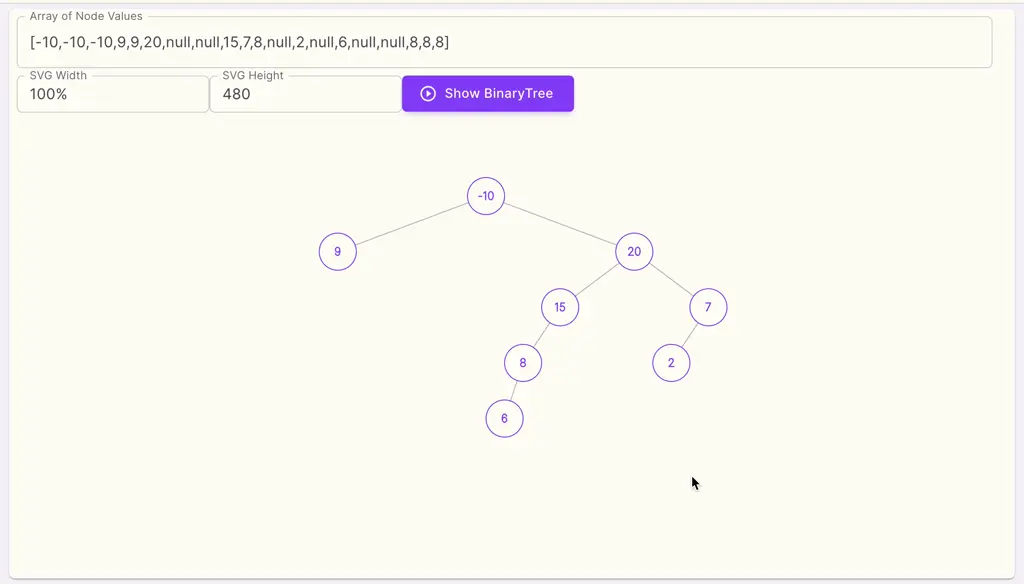
Binary Tree DFS
Try it out, or you can execute your own code using our visual tool
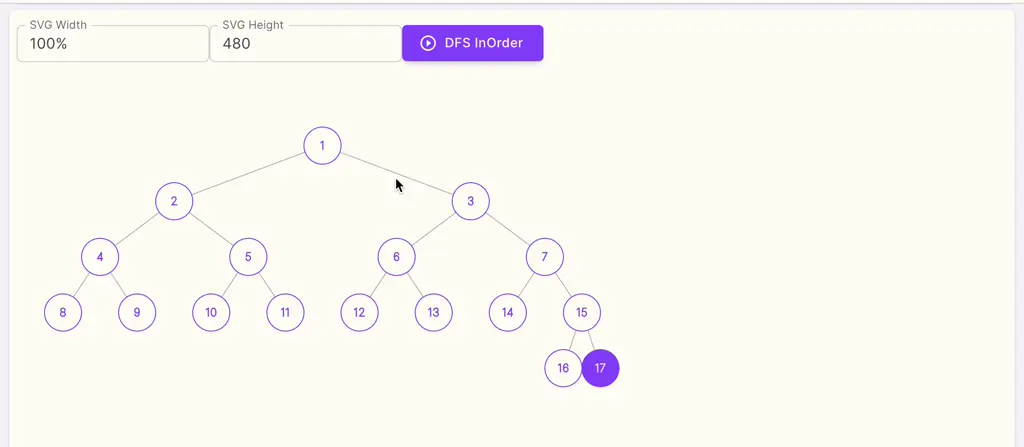
AVL Tree
Try it out, or you can execute your own code using our visual tool
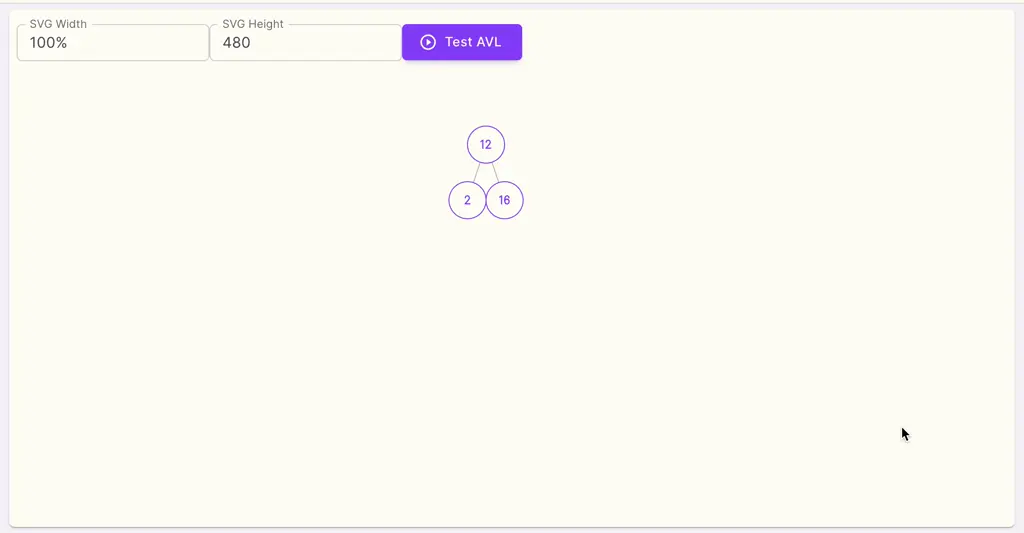
Tree Multi Map
Try it out, or you can execute your own code using our visual tool
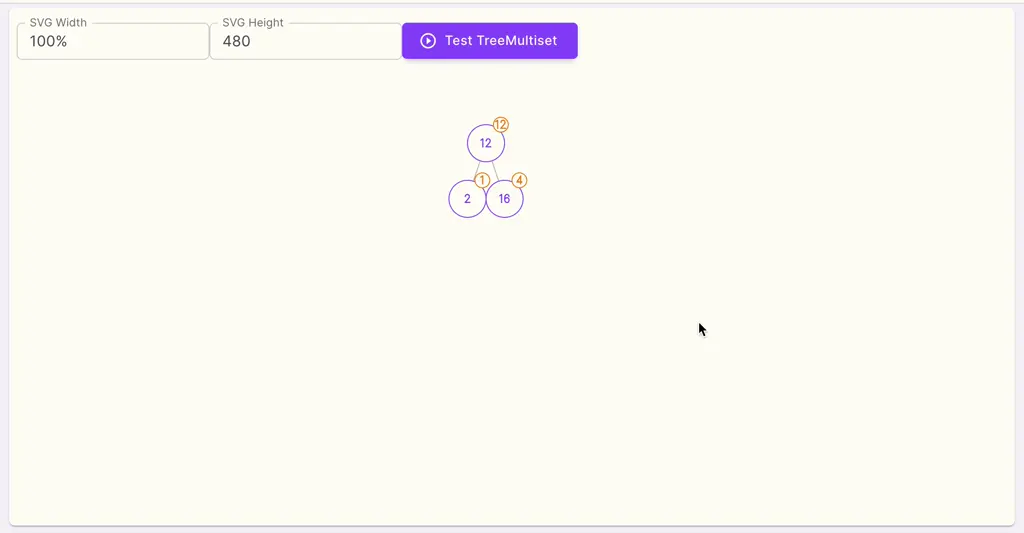
Matrix
Try it out, or you can execute your own code using our visual tool
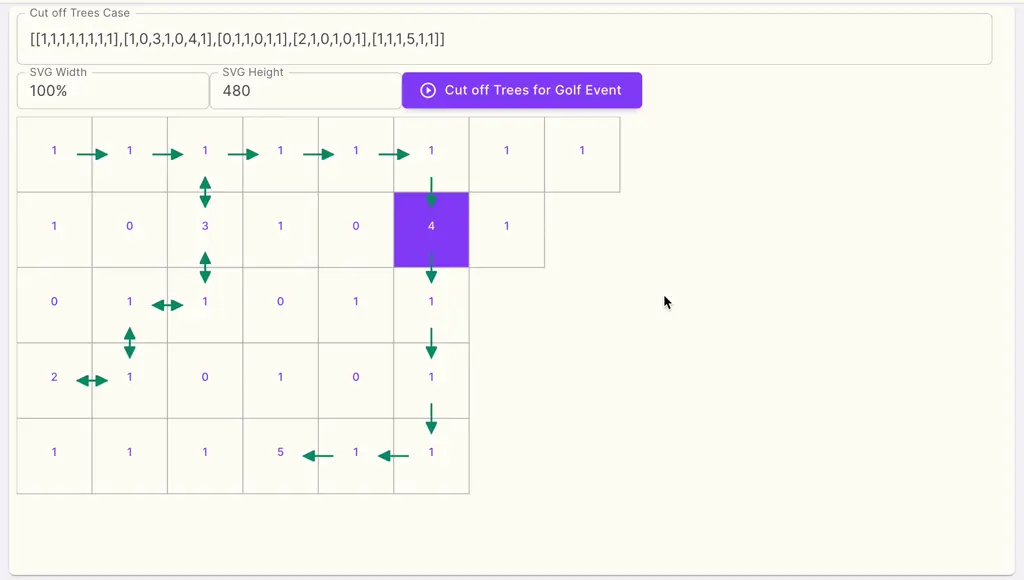
Directed Graph
Try it out, or you can execute your own code using our visual tool
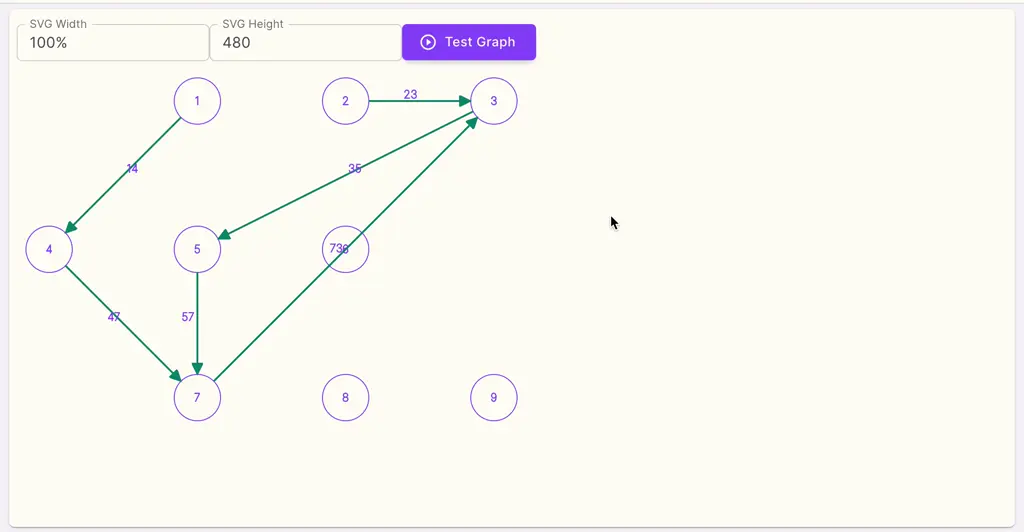
Map Graph
Try it out, or you can execute your own code using our visual tool
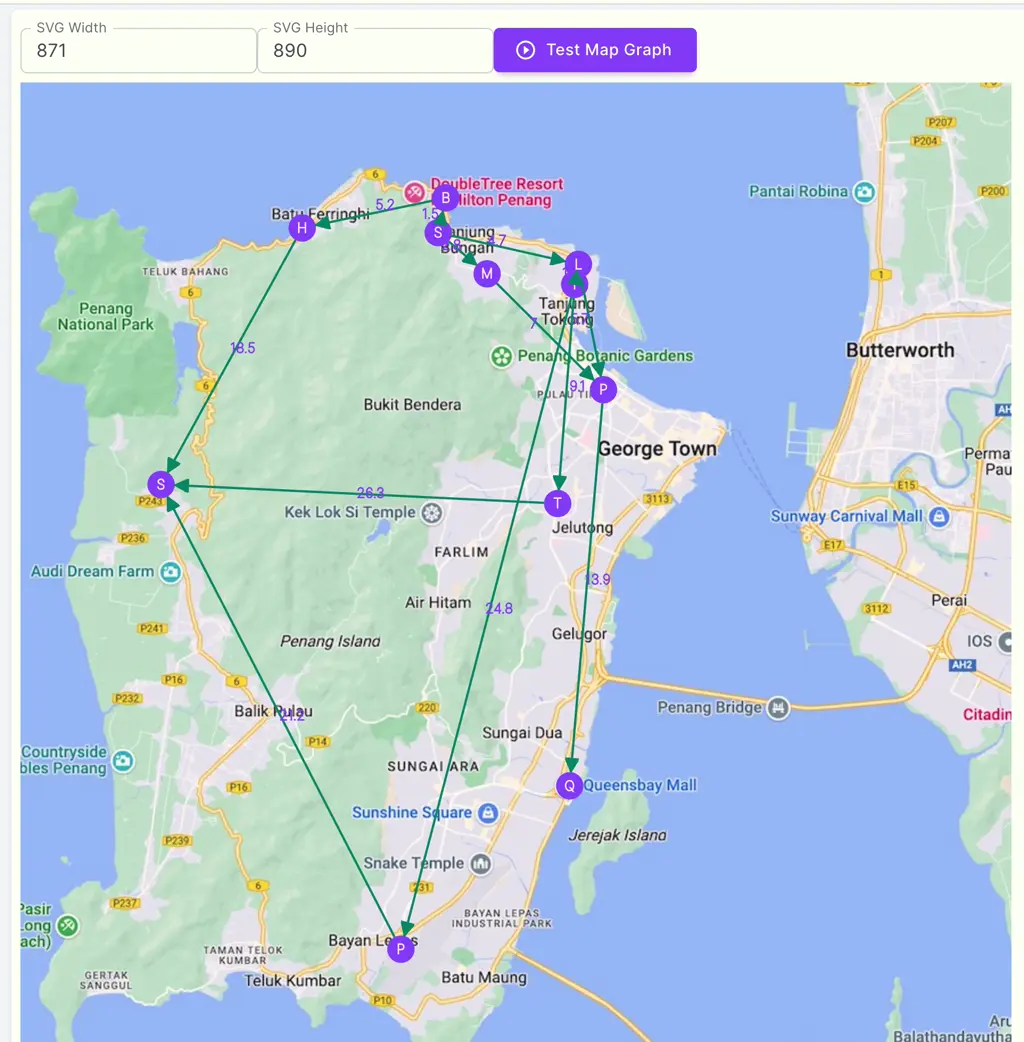
Code Snippets
Binary Search Tree (BST) snippet
TS
import {BST, BSTNode} from 'data-structure-typed';
const bst = new BST();
bst.add(11);
bst.add(3);
bst.addMany([15, 1, 8, 13, 16, 2, 6, 9, 12, 14, 4, 7, 10, 5]);
bst.size === 16; // true
bst.has(6); // true
const node6 = bst.getNode(6); // BSTNode
bst.getHeight(6) === 2; // true
bst.getHeight() === 5; // true
bst.getDepth(6) === 3; // true
bst.getLeftMost()?.key === 1; // true
bst.delete(6);
bst.get(6); // undefined
bst.isAVLBalanced(); // true
bst.bfs()[0] === 11; // true
const objBST = new BST<{height: number, age: number}>();
objBST.add(11, { "name": "Pablo", "age": 15 });
objBST.add(3, { "name": "Kirk", "age": 1 });
objBST.addMany([15, 1, 8, 13, 16, 2, 6, 9, 12, 14, 4, 7, 10, 5], [
{ "name": "Alice", "age": 15 },
{ "name": "Bob", "age": 1 },
{ "name": "Charlie", "age": 8 },
{ "name": "David", "age": 13 },
{ "name": "Emma", "age": 16 },
{ "name": "Frank", "age": 2 },
{ "name": "Grace", "age": 6 },
{ "name": "Hannah", "age": 9 },
{ "name": "Isaac", "age": 12 },
{ "name": "Jack", "age": 14 },
{ "name": "Katie", "age": 4 },
{ "name": "Liam", "age": 7 },
{ "name": "Mia", "age": 10 },
{ "name": "Noah", "age": 5 }
]
);
objBST.delete(11);
JS
const {BST, BSTNode} = require('data-structure-typed');
const bst = new BST();
bst.add(11);
bst.add(3);
bst.addMany([15, 1, 8, 13, 16, 2, 6, 9, 12, 14, 4, 7, 10, 5]);
bst.size === 16; // true
bst.has(6); // true
const node6 = bst.getNode(6);
bst.getHeight(6) === 2; // true
bst.getHeight() === 5; // true
bst.getDepth(6) === 3; // true
const leftMost = bst.getLeftMost();
leftMost?.key === 1; // true
bst.delete(6);
bst.get(6); // undefined
bst.isAVLBalanced(); // true or false
const bfsIDs = bst.bfs();
bfsIDs[0] === 11; // true
AVLTree snippet
TS
import {AVLTree} from 'data-structure-typed';
const avlTree = new AVLTree();
avlTree.addMany([11, 3, 15, 1, 8, 13, 16, 2, 6, 9, 12, 14, 4, 7, 10, 5])
avlTree.isAVLBalanced(); // true
avlTree.delete(10);
avlTree.isAVLBalanced(); // true
JS
const {AVLTree} = require('data-structure-typed');
const avlTree = new AVLTree();
avlTree.addMany([11, 3, 15, 1, 8, 13, 16, 2, 6, 9, 12, 14, 4, 7, 10, 5])
avlTree.isAVLBalanced(); // true
avlTree.delete(10);
avlTree.isAVLBalanced(); // true
Directed Graph simple snippet
TS or JS
import {DirectedGraph} from 'data-structure-typed';
const graph = new DirectedGraph();
graph.addVertex('A');
graph.addVertex('B');
graph.hasVertex('A'); // true
graph.hasVertex('B'); // true
graph.hasVertex('C'); // false
graph.addEdge('A', 'B');
graph.hasEdge('A', 'B'); // true
graph.hasEdge('B', 'A'); // false
graph.deleteEdgeSrcToDest('A', 'B');
graph.hasEdge('A', 'B'); // false
graph.addVertex('C');
graph.addEdge('A', 'B');
graph.addEdge('B', 'C');
const topologicalOrderKeys = graph.topologicalSort(); // ['A', 'B', 'C']
Undirected Graph snippet
TS or JS
import {UndirectedGraph} from 'data-structure-typed';
const graph = new UndirectedGraph();
graph.addVertex('A');
graph.addVertex('B');
graph.addVertex('C');
graph.addVertex('D');
graph.deleteVertex('C');
graph.addEdge('A', 'B');
graph.addEdge('B', 'D');
const dijkstraResult = graph.dijkstra('A');
Array.from(dijkstraResult?.seen ?? []).map(vertex => vertex.key) // ['A', 'B', 'D']
Built-in classic algorithms
| Algorithm |
Function Description |
Iteration Type |
| Binary Tree DFS |
Traverse a binary tree in a depth-first manner, starting from the root node, first visiting the left subtree,
and then the right subtree, using recursion.
|
Recursion + Iteration |
| Binary Tree BFS |
Traverse a binary tree in a breadth-first manner, starting from the root node, visiting nodes level by level
from left to right.
|
Iteration |
| Graph DFS |
Traverse a graph in a depth-first manner, starting from a given node, exploring along one path as deeply as
possible, and backtracking to explore other paths. Used for finding connected components, paths, etc.
|
Recursion + Iteration |
| Binary Tree Morris |
Morris traversal is an in-order traversal algorithm for binary trees with O(1) space complexity. It allows tree
traversal without additional stack or recursion.
|
Iteration |
| Graph BFS |
Traverse a graph in a breadth-first manner, starting from a given node, first visiting nodes directly connected
to the starting node, and then expanding level by level. Used for finding shortest paths, etc.
|
Recursion + Iteration |
| Graph Tarjan's Algorithm |
Find strongly connected components in a graph, typically implemented using depth-first search. |
Recursion |
| Graph Bellman-Ford Algorithm |
Finding the shortest paths from a single source, can handle negative weight edges |
Iteration |
| Graph Dijkstra's Algorithm |
Finding the shortest paths from a single source, cannot handle negative weight edges |
Iteration |
| Graph Floyd-Warshall Algorithm |
Finding the shortest paths between all pairs of nodes |
Iteration |
| Graph getCycles |
Find all cycles in a graph or detect the presence of cycles. |
Recursion |
| Graph getCutVertexes |
Find cut vertices in a graph, which are nodes that, when removed, increase the number of connected components in
the graph.
|
Recursion |
| Graph getSCCs |
Find strongly connected components in a graph, which are subgraphs where any two nodes can reach each other.
|
Recursion |
| Graph getBridges |
Find bridges in a graph, which are edges that, when removed, increase the number of connected components in the
graph.
|
Recursion |
| Graph topologicalSort |
Perform topological sorting on a directed acyclic graph (DAG) to find a linear order of nodes such that all
directed edges go from earlier nodes to later nodes.
|
Recursion |
API docs & Examples
API Docs
Live Examples
Examples Repository
Data Structures
Standard library data structure comparison
| Data Structure Typed |
C++ STL |
java.util |
Python collections |
| DoublyLinkedList<E> |
list<T> |
LinkedList<E> |
deque |
| SinglyLinkedList<E> |
- |
- |
- |
| Array<E> |
vector<T> |
ArrayList<E> |
list |
| Queue<E> |
queue<T> |
Queue<E> |
- |
| Deque<E> |
deque<T> |
- |
- |
| PriorityQueue<E> |
priority_queue<T> |
PriorityQueue<E> |
- |
| Heap<E> |
priority_queue<T> |
PriorityQueue<E> |
heapq |
| Stack<E> |
stack<T> |
Stack<E> |
- |
| Set<E> |
set<T> |
HashSet<E> |
set |
| Map<K, V> |
map<K, V> |
HashMap<K, V> |
dict |
| - |
unordered_set<T> |
HashSet<E> |
- |
| HashMap<K, V> |
unordered_map<K, V> |
HashMap<K, V> |
defaultdict |
| Map<K, V> |
- |
- |
OrderedDict |
| BinaryTree<K, V> |
- |
- |
- |
| BST<K, V> |
- |
- |
- |
| TreeMultimap<K, V> |
multimap<K, V> |
- |
- |
| AVLTree<E> |
- |
TreeSet<E> |
- |
| AVLTree<K, V> |
- |
TreeMap<K, V> |
- |
| AVLTree<E> |
set |
TreeSet<E> |
- |
| Trie |
- |
- |
- |
| - |
multiset<T> |
- |
- |
| DirectedGraph<V, E> |
- |
- |
- |
| UndirectedGraph<V, E> |
- |
- |
- |
| - |
unordered_multiset |
- |
Counter |
| - |
- |
LinkedHashSet<E> |
- |
| - |
- |
LinkedHashMap<K, V> |
- |
| - |
unordered_multimap<K, V> |
- |
- |
| - |
bitset<N> |
- |
- |
Benchmark
comparison
| test name | time taken (ms) | executions per sec | sample deviation |
|---|
| SRC 10,000 add | 0.57 | 1745.63 | 5.99e-6 |
| CJS 10,000 add | 0.57 | 1746.43 | 5.30e-6 |
| MJS 10,000 add | 0.58 | 1724.97 | 5.73e-5 |
| CPT PQ 10,000 add | 0.57 | 1745.61 | 7.49e-6 |
| SRC PQ 10,000 add & pop | 3.42 | 292.15 | 3.23e-5 |
| CJS PQ 10,000 add & pop | 3.37 | 296.36 | 3.64e-5 |
| MJS PQ 10,000 add & pop | 3.37 | 296.66 | 3.48e-5 |
| CPT PQ 10,000 add & pop | 2.07 | 482.94 | 2.10e-5 |
| CPT OM 100,000 add | 44.47 | 22.49 | 0.00 |
| CPT HM 10,000 set | 0.58 | 1716.99 | 1.45e-5 |
| CPT HM 10,000 set & get | 0.67 | 1491.78 | 1.61e-5 |
| CPT LL 1,000,000 unshift | 67.95 | 14.72 | 0.02 |
| CPT PQ 10,000 add & pop | 2.09 | 478.64 | 9.70e-5 |
| CPT DQ 1,000,000 push | 14.50 | 68.96 | 2.78e-4 |
| CPT Q 1,000,000 push | 47.51 | 21.05 | 0.00 |
| CPT ST 1,000,000 push | 42.03 | 23.79 | 0.01 |
| CPT ST 1,000,000 push & pop | 48.84 | 20.48 | 0.00 |
avl-tree
| test name | time taken (ms) | executions per sec | sample deviation |
|---|
| 10,000 add randomly | 30.95 | 32.32 | 4.46e-4 |
| 10,000 add & delete randomly | 70.84 | 14.12 | 0.00 |
| 10,000 addMany | 40.64 | 24.61 | 3.31e-4 |
| 10,000 get | 27.92 | 35.81 | 2.07e-4 |
binary-tree
| test name | time taken (ms) | executions per sec | sample deviation |
|---|
| 1,000 add randomly | 12.85 | 77.80 | 3.77e-4 |
| 1,000 add & delete randomly | 15.73 | 63.57 | 1.51e-4 |
| 1,000 addMany | 10.15 | 98.50 | 9.02e-5 |
| 1,000 get | 18.20 | 54.95 | 3.43e-4 |
| 1,000 dfs | 152.06 | 6.58 | 7.60e-4 |
| 1,000 bfs | 55.85 | 17.91 | 3.14e-4 |
| 1,000 morris | 256.13 | 3.90 | 9.73e-4 |
bst
| test name | time taken (ms) | executions per sec | sample deviation |
|---|
| 10,000 add randomly | 27.96 | 35.76 | 2.98e-4 |
| 10,000 add & delete randomly | 66.96 | 14.93 | 7.52e-4 |
| 10,000 addMany | 29.42 | 33.99 | 3.30e-4 |
| 10,000 get | 28.55 | 35.03 | 1.99e-4 |
rb-tree
| test name | time taken (ms) | executions per sec | sample deviation |
|---|
| 100,000 add | 87.42 | 11.44 | 0.00 |
| 100,000 CPT add | 44.17 | 22.64 | 0.00 |
| 100,000 add & delete randomly | 220.91 | 4.53 | 0.02 |
| 100,000 getNode | 40.48 | 24.70 | 5.58e-4 |
directed-graph
| test name | time taken (ms) | executions per sec | sample deviation |
|---|
| 1,000 addVertex | 0.10 | 9667.55 | 9.48e-7 |
| 1,000 addEdge | 6.17 | 161.99 | 1.79e-4 |
| 1,000 getVertex | 0.05 | 2.17e+4 | 3.52e-7 |
| 1,000 getEdge | 23.52 | 42.51 | 0.00 |
| tarjan | 220.31 | 4.54 | 0.01 |
| tarjan all | 224.17 | 4.46 | 0.00 |
| topologicalSort | 192.50 | 5.19 | 0.03 |
hash-map
| test name | time taken (ms) | executions per sec | sample deviation |
|---|
| 1,000,000 set | 269.88 | 3.71 | 0.04 |
| 1,000,000 CPT set | 251.08 | 3.98 | 0.05 |
| 1,000,000 Map set | 214.03 | 4.67 | 0.02 |
| 1,000,000 Set add | 170.84 | 5.85 | 0.01 |
| 1,000,000 set & get | 404.20 | 2.47 | 0.06 |
| 1,000,000 CPT set & get | 279.39 | 3.58 | 0.07 |
| 1,000,000 Map set & get | 269.85 | 3.71 | 0.01 |
| 1,000,000 Set add & has | 202.46 | 4.94 | 0.12 |
| 1,000,000 ObjKey set & get | 891.01 | 1.12 | 0.03 |
| 1,000,000 Map ObjKey set & get | 316.41 | 3.16 | 0.05 |
| 1,000,000 Set ObjKey add & has | 277.27 | 3.61 | 0.03 |
heap
| test name | time taken (ms) | executions per sec | sample deviation |
|---|
| 10,000 add & pop | 5.89 | 169.67 | 2.36e-4 |
| 10,000 fib add & pop | 362.10 | 2.76 | 0.00 |
doubly-linked-list
| test name | time taken (ms) | executions per sec | sample deviation |
|---|
| 1,000,000 push | 234.96 | 4.26 | 0.07 |
| 1,000,000 CPT push | 83.46 | 11.98 | 0.04 |
| 1,000,000 unshift | 220.58 | 4.53 | 0.03 |
| 1,000,000 CPT unshift | 73.26 | 13.65 | 0.03 |
| 1,000,000 unshift & shift | 168.56 | 5.93 | 0.01 |
| 1,000,000 insertBefore | 330.81 | 3.02 | 0.04 |
singly-linked-list
| test name | time taken (ms) | executions per sec | sample deviation |
|---|
| 10,000 push & pop | 216.94 | 4.61 | 0.02 |
| 10,000 insertBefore | 248.68 | 4.02 | 0.00 |
max-priority-queue
| test name | time taken (ms) | executions per sec | sample deviation |
|---|
| 10,000 refill & poll | 8.78 | 113.94 | 1.48e-4 |
priority-queue
| test name | time taken (ms) | executions per sec | sample deviation |
|---|
| 100,000 add & pop | 103.20 | 9.69 | 0.00 |
| 100,000 CPT add & pop | 27.41 | 36.49 | 7.73e-4 |
deque
| test name | time taken (ms) | executions per sec | sample deviation |
|---|
| 1,000,000 push | 13.99 | 71.46 | 2.13e-4 |
| 1,000,000 CPT push | 13.36 | 74.88 | 1.70e-4 |
| 1,000,000 push & pop | 23.47 | 42.61 | 0.01 |
| 1,000,000 push & shift | 24.19 | 41.34 | 0.00 |
| 1,000,000 unshift & shift | 22.13 | 45.19 | 5.99e-4 |
queue
| test name | time taken (ms) | executions per sec | sample deviation |
|---|
| 1,000,000 push | 37.01 | 27.02 | 9.55e-4 |
| 1,000,000 CPT push | 43.81 | 22.82 | 0.01 |
| 1,000,000 push & shift | 81.31 | 12.30 | 0.00 |
stack
| test name | time taken (ms) | executions per sec | sample deviation |
|---|
| 1,000,000 push | 37.88 | 26.40 | 0.00 |
| 1,000,000 CPT push | 39.17 | 25.53 | 0.00 |
| 1,000,000 push & pop | 46.24 | 21.63 | 0.00 |
| 1,000,000 CPT push & pop | 47.16 | 21.21 | 0.00 |
trie
| test name | time taken (ms) | executions per sec | sample deviation |
|---|
| 100,000 push | 42.84 | 23.35 | 8.44e-4 |
| 100,000 getWords | 92.26 | 10.84 | 0.01 |
Software Engineering Design Standards
| Principle |
Description |
| Practicality |
Follows ES6 and ESNext standards, offering unified and considerate optional parameters, and simplifies method names. |
| Extensibility |
Adheres to OOP (Object-Oriented Programming) principles, allowing inheritance for all data structures. |
| Modularization |
Includes data structure modularization and independent NPM packages. |
| Efficiency |
All methods provide time and space complexity, comparable to native JS performance. |
| Maintainability |
Follows open-source community development standards, complete documentation, continuous integration, and adheres to TDD (Test-Driven Development) patterns. |
| Testability |
Automated and customized unit testing, performance testing, and integration testing. |
| Portability |
Plans for porting to Java, Python, and C++, currently achieved to 80%. |
| Reusability |
Fully decoupled, minimized side effects, and adheres to OOP. |
| Security |
Carefully designed security for member variables and methods. Read-write separation. Data structure software does not need to consider other security aspects. |
| Scalability |
Data structure software does not involve load issues. |















































































